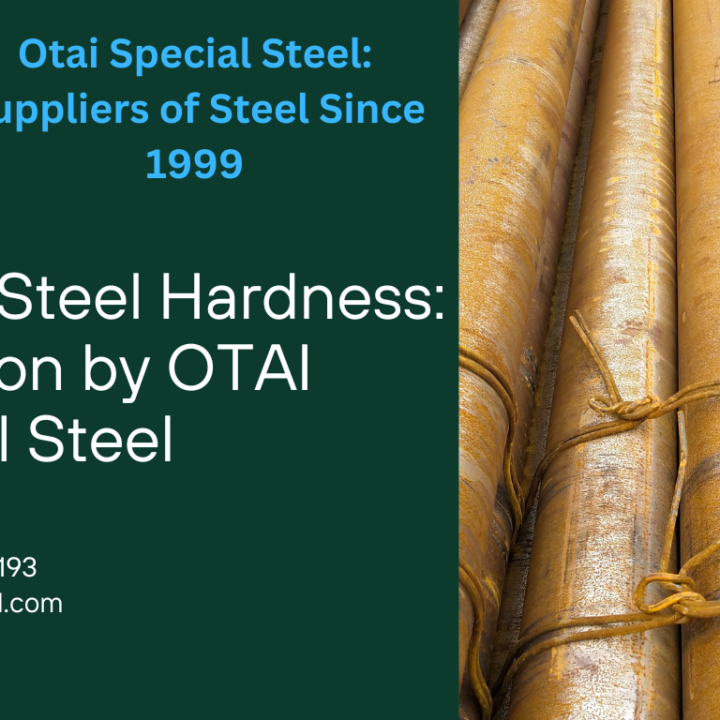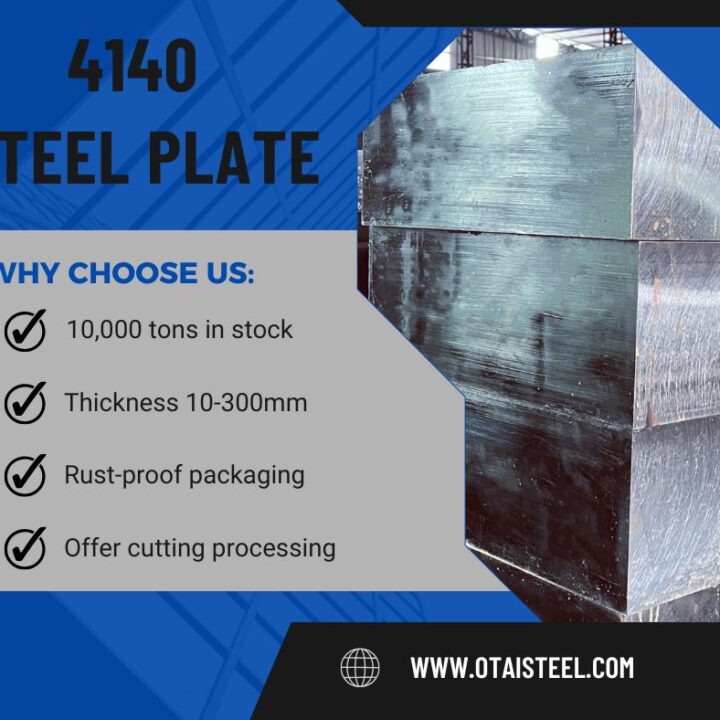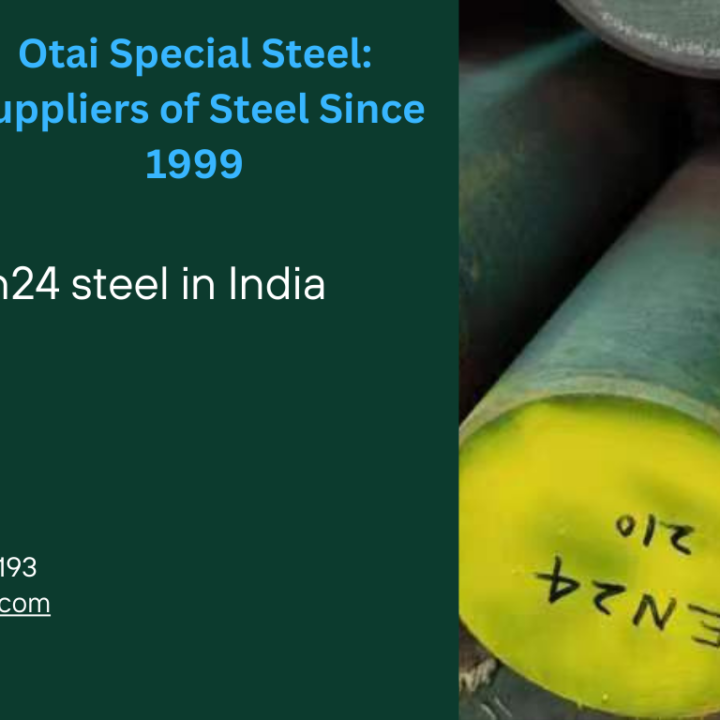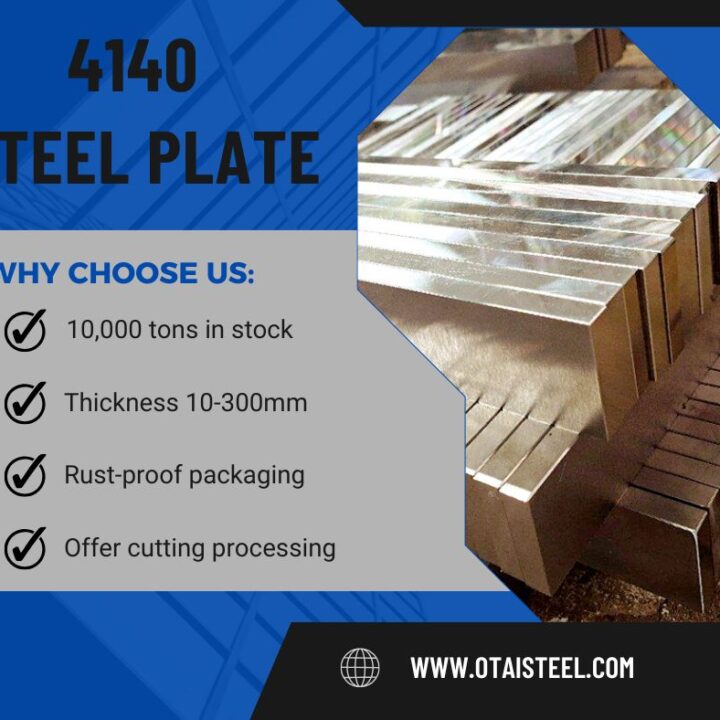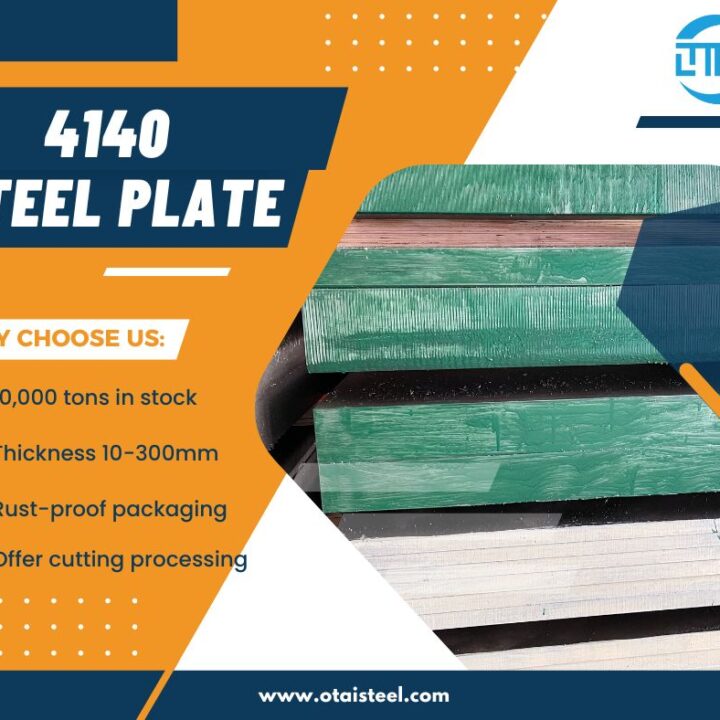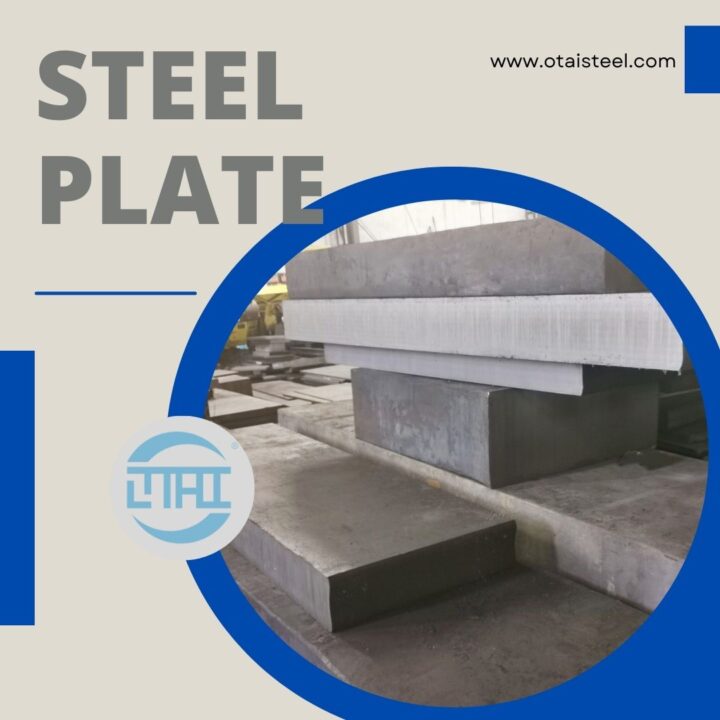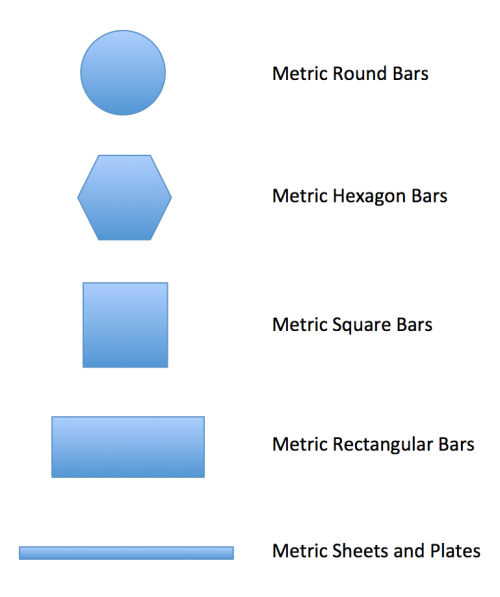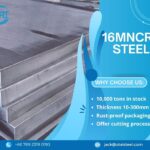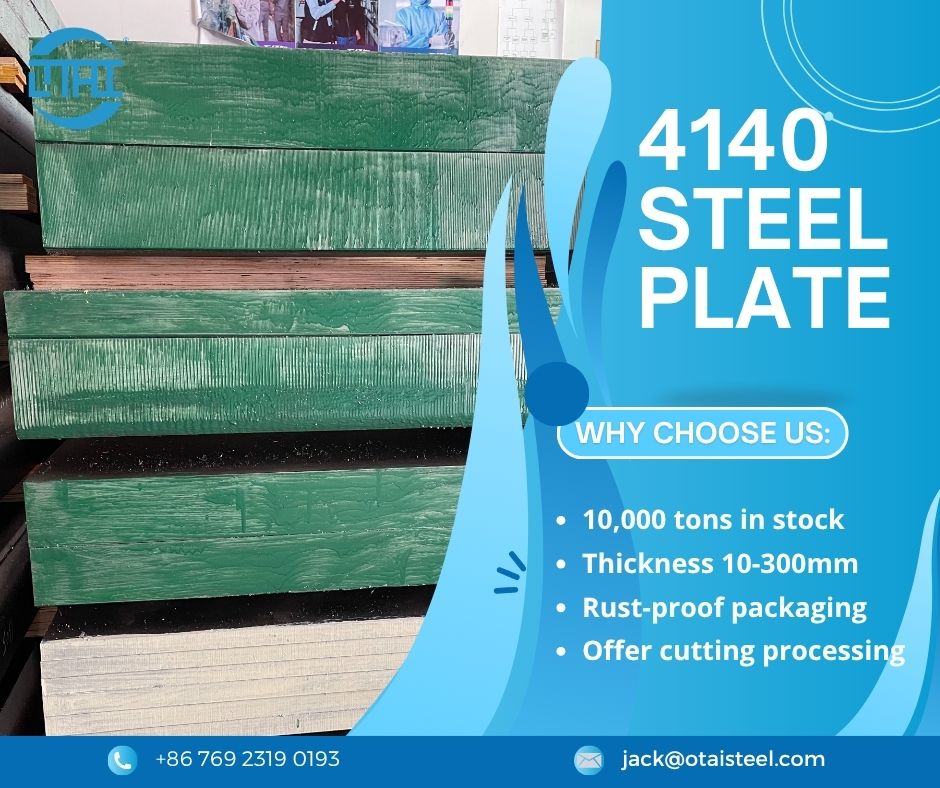 Microstructure of 4140 Steel: Key Insights for Strength and Durability
Microstructure of 4140 Steel: Key Insights for Strength and Durability
The microstructure of 4140 steel plays a crucial role in determining its mechanical properties, such as strength, toughness, and resistance to wear. Understanding how the microstructure of this alloy develops and how it affects the steel’s performance can help manufacturers and engineers optimize its use for various applications. In this article, we will explore the microstructure of 4140 steel, how it contributes to its properties, and why it’s a popular choice in industries requiring high-performance materials.
🏗️ What is 4140 Steel?
4140 steel is a medium-carbon alloy steel containing chromium and molybdenum. These alloying elements enhance the steel’s properties, particularly in terms of hardness, strength, and resistance to wear and fatigue. Commonly used in the automotive, aerospace, and heavy machinery industries, 4140 steel offers a combination of good tensile strength, toughness, and fatigue resistance, which makes it suitable for high-stress applications.
🔬 The Microstructure of 4140 Steel
The microstructure of a material refers to the arrangement of its internal structures, such as grains, phases, and boundaries, on a microscopic scale. For 4140 steel, its microstructure plays a significant role in determining its mechanical properties.
At the core of 4140 steel’s microstructure are three main phases:
1. Ferrite
-
Ferrite is the body-centered cubic (BCC) form of iron that dominates in low-carbon steels. In 4140 steel, ferrite is the softer phase and is responsible for the steel’s ductility and toughness.
-
It is typically found along the grain boundaries and can influence the strength of the material.
2. Pearlite
-
Pearlite is a mixture of ferrite and cementite (Fe₃C), and it forms as 4140 steel cools from a high temperature. This phase is essential for providing the steel with its tensile strength and hardness.
-
The alternating layers of ferrite and cementite in pearlite contribute to the steel’s strength, making it suitable for applications requiring good wear resistance.
3. Martensite
-
Martensite forms when 4140 steel is rapidly cooled (quenched) from the austenitic phase, resulting in a much harder, stronger phase.
-
Martensitic structures provide significant strength, hardness, and wear resistance, though they can make the steel more brittle.
-
Depending on the cooling rate and tempering process, the amount of martensite in the steel can vary, directly influencing its overall properties.
4. Cementite
-
Cementite (Fe₃C) is an iron carbide phase that contributes to the hardness and wear resistance of 4140 steel. The distribution of cementite within the microstructure influences the steel’s strength.
-
In 4140 steel, cementite is often part of the pearlite structure and can provide additional hardness, especially when present in higher amounts.
🔧 How Heat Treatment Affects the Microstructure of 4140 Steel
Heat treatment is critical for modifying the microstructure of 4140 steel and, consequently, its mechanical properties. Different heat treatment processes can alter the proportion of ferrite, pearlite, martensite, and cementite within the material. Here are some common heat treatments used with 4140 steel:
1. Annealing
-
Annealing is a heat treatment process where 4140 steel is heated to a specific temperature and then slowly cooled. This process helps to relieve internal stresses and soften the steel.
-
Annealed 4140 steel typically has a higher proportion of ferrite and pearlite, making it more ductile and easier to machine.
2. Quenching and Tempering
-
Quenching involves heating the steel to its austenitic range and then rapidly cooling it, usually in water or oil, to form a martensitic structure. After quenching, tempering is performed to reduce brittleness by reheating the steel to a lower temperature.
-
The result is a 4140 steel that has a higher hardness, strength, and wear resistance, thanks to the formation of martensite in the microstructure.
3. Normalizing
-
Normalizing involves heating 4140 steel to a temperature above its critical range and then air-cooling it. This process refines the grain structure and makes the steel more uniform, improving its mechanical properties like strength and toughness.
💡 How the Microstructure Affects the Properties of 4140 Steel
The microstructure directly influences the physical properties of 4140 steel. Here’s how each phase affects the material’s overall performance:
1. Strength and Hardness
-
The amount of martensite and cementite in the microstructure increases the hardness and tensile strength of the steel. As 4140 steel cools rapidly during quenching, the formation of martensite significantly increases its hardness, making it suitable for high-stress applications.
2. Toughness and Ductility
-
The ferrite phase enhances the toughness and ductility of the steel. While martensite increases strength, it can make the steel more brittle. Therefore, the presence of ferrite is crucial for balancing strength with toughness.
3. Wear Resistance
-
The pearlite and cementite phases contribute to the wear resistance of 4140 steel, making it a preferred choice for components exposed to abrasive forces, such as gears, shafts, and axles.
📊 Microstructure and Properties Comparison
Here is a quick comparison of the microstructure and properties of 4140 steel compared to other common steels:
| Material | Primary Microstructure | Hardness | Tensile Strength | Wear Resistance | Applications |
|---|---|---|---|---|---|
| 4140 Steel | Martensite, Pearlite, Cementite | High | 655-1,000 MPa | High | Automotive, aerospace, industrial machinery |
| 1045 Steel | Pearlite, Ferrite | Medium | 600-800 MPa | Medium | General engineering, manufacturing |
| 4142 Steel | Martensite, Pearlite | High | 700-950 MPa | High | Heavy machinery, automotive |
| AISI 4340 | Martensite, Pearlite | Very High | 850-1,100 MPa | Very High | Aerospace, military |
🏆 Why Choose Otai Special Steel for Your 4140 Steel Needs?
At Otai Special Steel, we specialize in providing top-quality 4140 steel with optimized heat treatments to achieve the ideal microstructure for your specific applications. Our 4140 steel products are available in various forms, including plates, bars, and rods, and can be customized to meet your exact requirements.
Advantages of Working with Otai Special Steel:
-
High-Quality Materials: We ensure that our 4140 steel meets the highest standards of quality, performance, and reliability.
-
Customized Heat Treatments: We offer customized heat treatments to tailor the microstructure of 4140 steel for your specific needs.
-
Competitive Pricing: Our 4140 steel products are offered at competitive prices, ensuring excellent value without compromising on quality.
-
Fast Delivery: We maintain a large inventory and efficient logistics, ensuring timely deliveries to meet your project deadlines.
❓ Frequently Asked Questions (FAQ)
Q1: What is the typical microstructure of 4140 steel?
-
A1: The typical microstructure of 4140 steel consists of martensite, pearlite, and cementite, which contribute to its strength, hardness, and wear resistance.
Q2: How does heat treatment affect the microstructure of 4140 steel?
-
A2: Heat treatment processes like quenching and tempering alter the microstructure of 4140 steel, increasing its hardness and strength while improving its toughness and ductility.
Q3: Can the microstructure of 4140 steel be customized?
-
A3: Yes, the microstructure of 4140 steel can be customized through various heat treatments to achieve specific properties like strength, toughness, and wear resistance, depending on the intended application.

